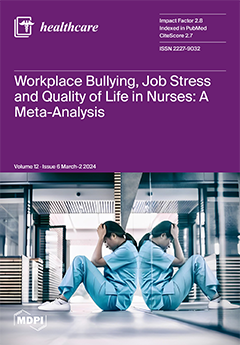Study Objectives: The aim of this cross-sectional study is to explore the association between serum 25-hydroxyvitamin D [25(OH)D] levels, a marker of Vitamin D status, and excessive daytime sleepiness (EDS), expressed as increased scores of the Epworth Sleepiness Scale (ESS), in a group of prospectively enrolled patients with obstructive sleep apnea (OSA). Methods: Newly diagnosed patients with OSA, divided into two groups, those with EDS (ESS > 10) and those without EDS (ESS < 10). All patients underwent night polysomnography. Measurement of serum 25(OH)D vitamin was performed using a radioimmunoassay. Results: In total, 217 patients with OSA (197 males and 20 females) were included. Patients with EDS had higher AHI (
p < 0.001) values and lower mean serum 25(OH)D levels, compared with those of non-somnolent patients [17.4 (12.2–25.7) versus 21.1 (15.3–28.8) ng/mL, respectively,
p = 0.005]. In patients with EDS, serum 25(OH)D levels correlated with average oxyhemoglobin saturation during sleep (r = 0.194,
p = 0.043), and negatively with ESS score (r = −0.285,
p = 0.003), AHΙ (r = −0.197,
p = 0.040) and arousal index (r = −0.256,
p = 0.019). Binary regression analysis identified Vit D serum levels (β = −0.045, OR: 0.956, 95% CI: 0.916–0.997,
p = 0.035), total sleep time (β = 0.011, OR: 1.011, 95% CI: 1.002–1.021,
p = 0.016) and AHI (β = 0.022, OR: 1.022, 95% CI: 1.003–1.043,
p = 0.026) as independent predictors of EDS in patients with OSA. In patients with EDS, multiple regression analysis indicated that ESS score was negatively associated with Vit D serum levels (β = −0.135,
p = 0.014) and minimum oxyhemoglobin saturation during sleep (β = −0.137,
p = 0.043). Conclusions: In the present study, EDS in patients with OSA is associated with low levels of Vitamin D, while sleep hypoxia may play a role in this process.
Full article






